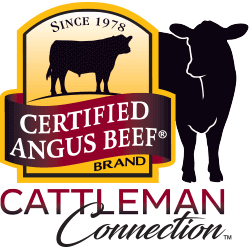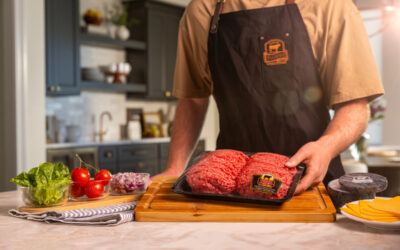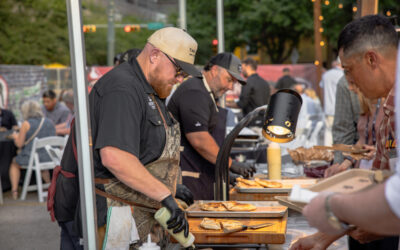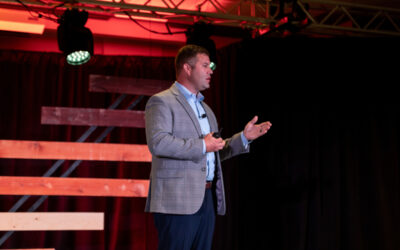
Expensive steak doesn’t have to cost us customers
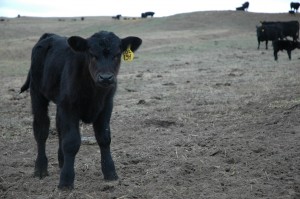
Just as I hit “publish” on yesterday’s blog post, a fellow employee sent around an article from the Wall Street Journal, “Steakhouse Diners Feeling the Bite as Prices Rise.”
The lead kind of sums up that problem I brought up yesterday, “To hike or not to hike? That is the question facing steakhouses and restaurants as they continue to face steep price increases in food costs, particularly beef.”
At this time of low cattle inventories, high cattle prices don’t mean fewer buyers. Stockers and feeders are all competing for animals to fill their pens. But for those restaurant operators, higher prices could mean their diners will go elsewhere. It’s not like we have a shortage of eating establishments, after all.
The WSJ article said beef prices have risen 30% in the past two years, but restaurateurs aren’t able to just pass those prices along to the consumer. One of the interviewees said he just raised his ribeye price to $92. You may think, $92 for one steak?!??! (I did.) But he said, “I’m not even making money on my steak, I’m just breaking even.”
I introduced you to CAB’s Gale Rhoads yesterday. He’s one of the people who helps to make sure that when the going gets rough for restaurateurs they don’t back off on selling quality beef. (Think about the power they have to push other proteins or veggie dishes.)
Rather than “trade down” to lower quality, which will ultimately leave the consumer saying, “Why did I pay [insert very large price tag] for that?”
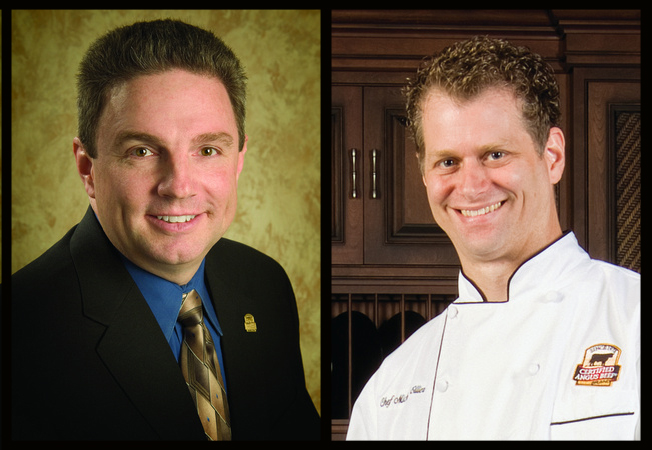
Gale, as part of our “in the trenches” team, gives some practical suggestions to keep beef on the menu at a reasonable price and keeping those customers happy:
“As prices go up, they start to make adjustments so they can maintain a profit for their operation. Sometimes they have to reduce their steak size, from a 14 oz to a 12 oz. or a 12 oz. to a 10 oz.. So it still satisfies the consumer with a good portion but gives them an opportunity to maintain their profit as well,” Gale said.
Another option? Featuring some of those “underutilized cuts”—the diamonds in the rough that cost less, but deliver a delicious punch.
Chef Michael recently discussed these in his “What’s Cooking” column in the Angus Journal:
- Rib filet – On a ribeye steak, you can usually see a seam of fat that runs around one side of the steak, about an inch in from the edge. What some don’t realize is that’s the dividing line between two different muscles – the rib and the spinalis. Those two muscles are usually cut together to make a ribeye steak, but recently chefs have been separating them on the subprimal and serving a “Filet of Rib.” Then they save the spinalis, also known as the rib cap, to create another dish (think the best beef skewer you’ve ever imagined).

- Split Strip – This is another twist on a familiar cut, also driven by a desire to make more reasonable portion sizes. It’s exactly what it sounds like – splitting the whole strip loin in half to create the “Manhattan Steak,” a smaller version of the traditional New York Strip Steak.
- Culotte – Another cut from the sirloin that’s final getting it’s deserved recognition. The culotte is to the sirloin what the spinalis is to the ribeye – the “cap” muscle that is easily separated and served on its own.
Bottom line: Restaurateurs are not getting rich off of beef (even if they’re selling a single steak for $92), but they are using a little good old American ingenuity to keep people eating what you produce. And that’s good for everybody.
May your bottom line be filled with black ink,
Miranda
You may also like
Success, Despite Challenges
Today’s market is complex and competitive. The collective effort of stakeholders across the supply chain positions Certified Angus Beef to meet the record demand for premium beef moving forward. Signals across the beef industry are clear and Angus farmers and ranchers seeking high-quality genetics that deliver premium beef are producing a product in high demand.
Keep the Supply Coming
A record-high 800 registrants from 17 countries gathered in Austin, Texas, to learn more about CAB, become inspired by the culinary work of chefs and pitmasters, and celebrate sales and production success. But at the forefront: supply and demand, a reflection of the chaotic past year, and preparing for what’s ahead.
Consumer Demand, Power of Quality
Demand for high-quality beef persists. But with that demand comes challenges. From tight cattle supplies to higher costs and increasing pressure on retailers to deliver a consistent eating experience, the pressure is on. David O’Diam, CAB VP of retail, addressed the current retail beef environment, highlighting both opportunities and challenges in today’s marketplace.
